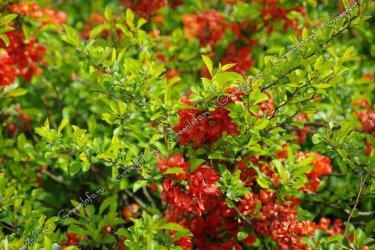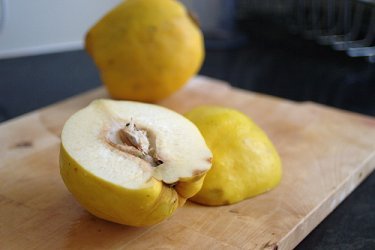Quince
Chaenomeles, or Japanese quince, is a low tree, sometimes reaching 3 m, or has the appearance of a shrub. It is grown as a fruit crop or for decorative purposes. The tree is drought-resistant and loves bright light.
Quince cultivation
The plant is not demanding on the quality of the soil and its composition, but in order to get beautiful flowering and wait for fruiting, you will need to provide the plant with soil:
- well drained;
- rich in humus;
- moderately moisturized;
- with moderate acidity.
You should choose a place for planting that is well lit; this is a prerequisite for obtaining active flowering and fruiting.
Varieties grown in the middle zone are frost-resistant, however, with a strong decrease in temperature, annual shoots can freeze.
So the best option is to organize wintering of bushes under the cover of spruce branches and fallen leaves.
How to plant quince
Suitable times for planting are spring and autumn. Since quince is a cross-pollinated plant, it is initially recommended to plan to plant at least three seedlings.
Planting single specimens of self-fertile quince can lead to a significant reduction in yield.
Quince is propagated by layering, use root shoots and cuttings for planting. Such methods make it possible to preserve the varietal characteristics of mother plants.
There is another method, growing from seeds, but it is used to obtain a rootstock or for breeding work, because the new plant will not have any characteristics of the variety.
Rules of care, how to fertilize quince
The plant does not require special care; weeding the tree trunk is done twice a season, in spring and autumn. Watering is resorted to only in case of prolonged drought.
Fertilizing quince is also done twice a season:
- During the flowering period, fertilizers containing nitrogen are scattered in the tree trunk circle;
- During fruit formation, complex fertilizers are used.
The bush is pruned in the spring. It is recommended to completely remove shoots that are 5 years old or more; 3-year-old shoots are considered productive; the bush should not contain more than 15 branches.
Young bushes begin to bear fruit at the age of three to four years. Harvesting is done in the fall, before frost sets in.
To improve the taste, the fruits are kept for several months at a temperature of about + 5 C.
About beneficial properties
Quince is an ornamental plant; it looks especially attractive during the flowering period. In addition, she is an excellent honey plant.
Densely planted bushes are used as hedges. The plant is also used for single plantings. Low-growing forms are used to create rockeries and alpine slides.
The powerful root system of the shrub prevents erosion of loose soils.
The fruits have an original taste and aroma, they are rich in vitamins. About how they used in cooking and folk medicine You can find out by reading an article specifically devoted to this issue.


